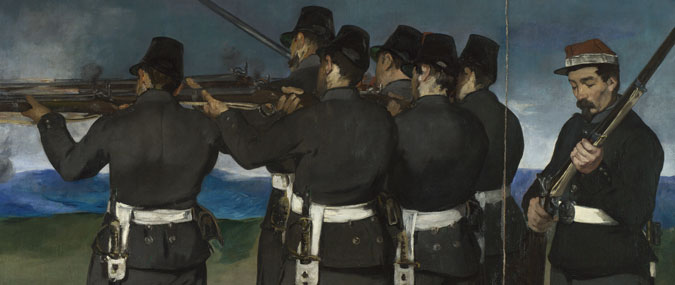Painting contemporary history
The May 1868 issue of the French journal 'L’Artiste' announced that Manet's 'Death of Maximilian' would be shown at the Paris Salon, the most important annual exhibition in France. Yet none of the three compositions ever made an appearance at a Salon during the artist's lifetime. Furthermore, authorities refused permission to sell the lithograph Manet had created after having abandoned the London canvas. This incident prompted a debate on censorship in the press initiated by the writer Emile Zola.
By 1869 many pamphlets and books had commented on the French intervention in Mexico and its disastrous consequences, often openly condemning Napoleon III for his fatal policies. The political delicacy of the event, as well as Manet's modern treatment of it, was responsible for the banishment of his 'Execution of Maximilian' from public display in 19th-century France.
Following the examples of Gustave Courbet and Eugène Delacroix, Manet presented contemporary subject matter on a large scale executed with vivid brushstrokes. Such monumental canvases had previously been reserved for academic history painting representing important events from the past as examples of heroism and morality. Artists working in this tradition directed the viewer’s opinion by way of an unambiguous focus, legible detail and meaningful facial expressions and gestures. Manet's simplifying compositions, flattened backgrounds and roughly painted features were too modern to be appreciated by the broader public accustomed to the work of neoclassical painters such as Jean-Auguste-Dominique Ingres.

